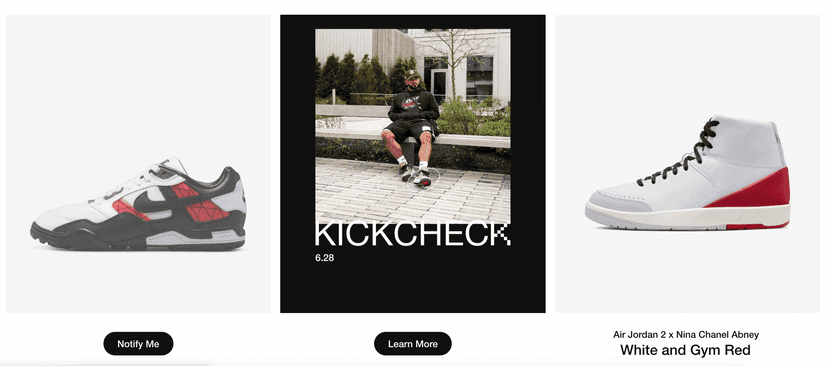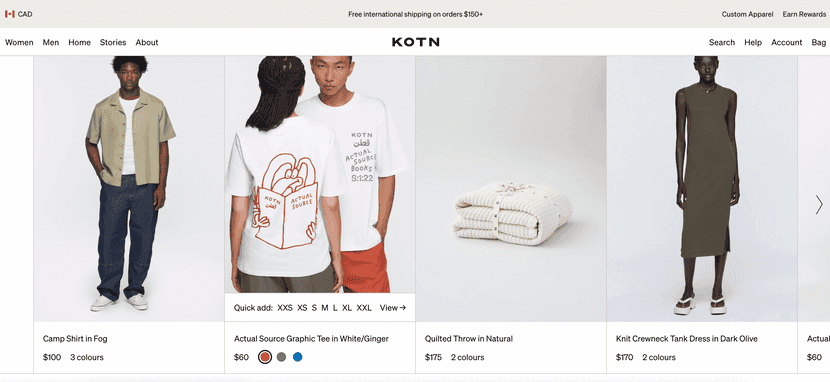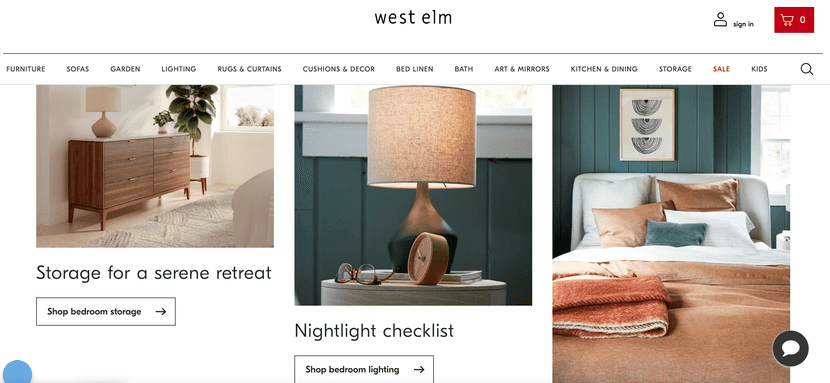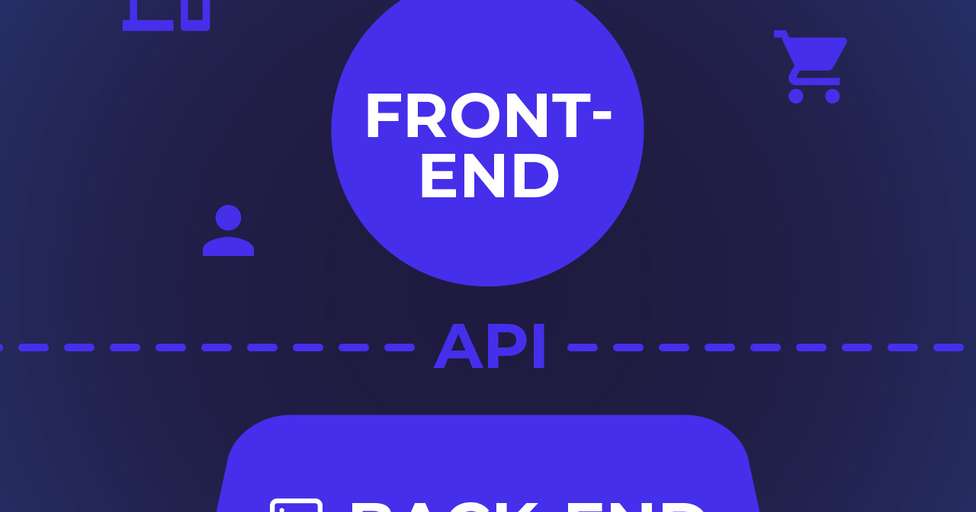The constant changes in consumers’ habits are affecting the way businesses carry out their operations, both online and offline. How can your brand meet the new requirements of the eCommerce sector? With the flexibility provided by headless commerce.
Learn why you should use headless commerce, the benefits behind a headless architecture, and some of the best headless eCommerce platforms out there.
What is headless commerce?
The headless commerce concept goes back to the fundamentals of website development, separating the frontend and the backend of an online store.
This allows companies to create a better purchasing experience for their customers without needing to change or update the backend infrastructure. This accelerates the creation of new features, sales strategies, and marketing campaigns without having to invest as many resources compared to changes in both the frontend and backend.
In a “headless architecture”, the online store is left without the front end (the “head” of the website) and the presentation of products, banners, and other types of content is left in the hands of developers who need to implement APIs to deliver this information to the buyer.
Traditional eCommerce vs. headless commerce
In traditional eCommerce, both the frontend and the backend are connected and provided by the eCommerce platform, regardless of its customization features.
In a headless commerce model, the system works by passing requests via API between the front and the back.
Headless commerce systems can use a CMS, DXP, application, device, or a custom system for the frontend and build their backend separately.
But what does this mean?
Traditional eCommerce can be constraining because of the time needed to design and edit the database, code, and platform, whereas in a headless architecture, everything will be run exactly as the online store decides to, in a shorter time frame.
Traditional eCommerce already presents a predefined model for both the buyer and the online store. This is entirely customizable in a headless commerce platform, enabling you to create your very own purchasing experience and to decide how you want to run your business.
Best headless eCommerce platforms
Adobe Commerce (formerly Magento Commerce)
Adobe Commerce is a self-hosted, open-source platform. Adobe Commerce’s architecture is completely customizable, offering total flexibility when it comes to planning your business operations and mastering the customer journey for your buyers. On the negative side, the learning curve of this eCommerce platform is steep and both its free version and paid plan come at a high implementation and maintenance costs.
Shopify Plus
Shopify Plus is the highest subscription plan from Shopify. It’s designed for large online stores that process thousands of orders every month.
Shopify Plus offers a reliable platform with unlimited hosting and bandwidth, high-speed performance anywhere with 99.99% uptime, unlimited test and development environments, and other features and benefits.
It also includes the possibility to install and use Shopify Apps to easily extend its functionalities and aesthetics in a convenient manner.
Both of these headless eCommerce platforms can be connected to Outvio, the post-checkout infrastructure where you can put your operations on auto-pilot to increase performance and reduce inefficiencies that lead to unnecessary costs.
Sign up and take your eCommerce business to the next level today! Outvio has integrations with 30+ CMSs, including Magento and Shopify
Benefits of headless commerce for the online retailer
1. It truly sets you up for an omnichannel strategy
Try to build an omnichannel retail experience with a traditional eCommerce platform. Let us tell you, it won’t be easy, fast, or cheap. A headless commerce platform, on the other hand, enables brands to adopt new channels or enter new markets without the setback of needing to close the online store —even if it’s only temporarily.
Headless commerce allows you to promote and sell your products on as many platforms as you wish: eBay, Amazon, social media platforms, and any other sales or promotion channel.
2. It can be used to create original websites
This improves the purchasing experience for the customers while keeping costs lower than if you were to make these changes and designs without a headless architecture. The company can choose, depending on its needs, the platform that is better suited for them (CMS, a DXP, a PWA, or a custom solution).
3. It boosts competitiveness
Headless commerce enables businesses to deploy changes faster than if you had the front and back connected. In plain words, it means that you’ll need to release only the part of your business where the change has been done, delivering what customers want more effectively and remaining competitive in the eCommerce sector.
4. It speeds up online store performance
Fast loading speed is vital in the eCommerce industry. It’s been proven that websites that take more than 3 seconds to load have a higher bounce rate and, as a consequence, receive fewer orders.
Loading speed is also a Google ranking factor, meaning your store will appear higher on the search engine results pages when customers are searching online for a product that you happen to sell.
A headless architecture stores the information and delivers it via API. This approach is more effective than delivering it through a traditional eCommerce platform.
5. It speeds up marketing actions
The separation brought by a headless architecture means that designing and implementing new customer experiences will be easier and faster. It also means being able to localize your brand to the market, division, product catalog, etc.
Instead of days or weeks, the marketing department can create different campaigns at a lower cost but with a bigger reward for the customer and the online store, thanks to customization based on season, market, or upcoming product launches.
6. It helps you scale your business
Integrating with different software systems will be easier once the frontend and backend are separated. As your company grows, a headless architecture allows you to adjust your frontend without having to build a new website from scratch.
Thanks to the API connection, you’ll be able to shorten the integration time to a few hours or a couple of days (at most), add new payment gateways, and optimize the checkout process for your customer within minutes. Each functionality will be treated individually and can be integrated as the site grows, expanding your opportunities to reach out to more customers.
Benefits of headless commerce for the customer
However, headless commerce is not only beneficial to online stores as a business; customers can also enjoy the advantages of headless commerce.
For instance, it allows you to create an enhanced customer experience thanks to more frequent website improvements that are easier and faster to implement. This enables you to launch seasonal marketing campaigns and specific actions to promote new products.
All the advantages of headless commerce will only be effective if the online store uses all the characteristics of a headless architecture to create a richer user experience and interface.
Headless commerce examples
Some brands using a headless commerce platform are:
1. Nike
Nike, as many other online stores that are focused on building an outstanding customer experience internationally, has gone headless.

M-commerce —the use of social media as a marketing and sales channel— along with the size of this eCommerce business has made it necessary to create a headless architecture that allows this company to operate at full capacity, maximizing costs and results.
2. KOTN
KOTN decided to use headless commerce as an opportunity to merge two stores through an API.

Depending on their growth stage, KOTN changes the appearance and features of the online store without interfering with the backend operation. By going headless, the brand has a complete view of the storefront and is able to create a personalized purchasing experience.
3. West Elm
Furniture brand West Elm decided to go headless to create a smoother purchasing journey for their customers across different sales and promotion channels.

This is a strategy that helped them meet the needs of the new consumers, just like using mobile commerce so customers could make a purchase online after seeing the item in their physical store. The brand used Progressive Web App technologies (PWAs) to accelerate the loading speed of the site and improve mobile responsiveness.
How do you get started with headless commerce?
If you find what you are reading about headless commerce interesting and want to move your online store to a headless architecture, decide whether you want to keep any part of your eCommerce platform or if you prefer to start from scratch.
If you opt to create a new store, choose a headless platform such as a CMS, DXP or build your own custom solution. Lastly, you will need to connect your frontend with your backend. In other words, connect this headless platform to your API.
Before deciding to go headless, it’s important to consider the costs and the time needed for the migration, as well as the advantages and disadvantages of switching platforms.
Conclusions
Whether we talk about a well-established online store or if you are still in the process of building out your enterprise architecture, a headless commerce approach might be the right choice for your company.
Improve your scaling opportunities and enjoy all the advantages of headless commerce to enhance the customer experience and differentiate yourself from competitors based on experience, rather than price.




